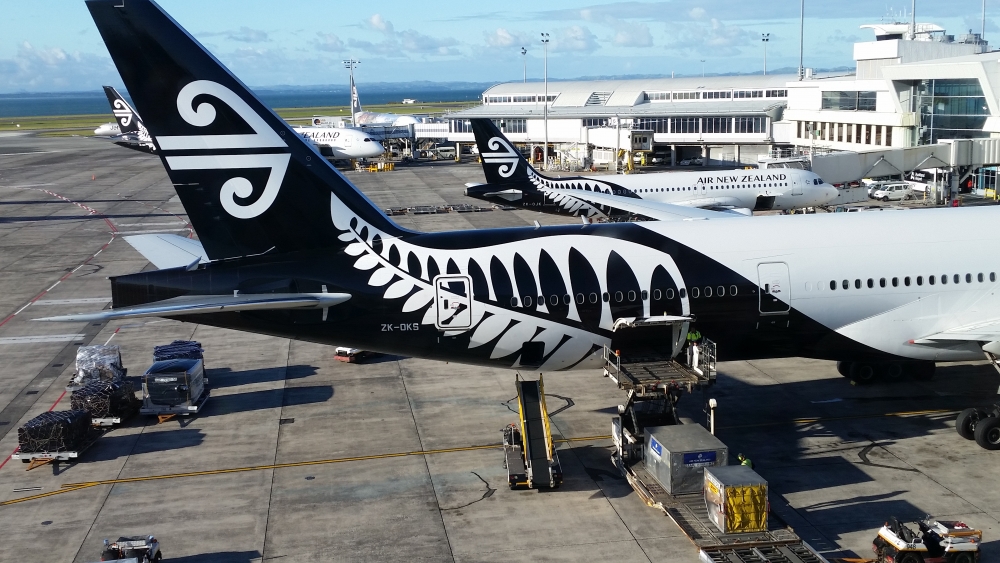Near miss prompts Air New Zealand call to jail reckless drone users
27 March, 2018
4 min read
By joining our newsletter, you agree to our Privacy Policy


A near miss between a drone and a Boeing 777-200 on descent into Auckland has prompted Air New Zealand to call for jail time for people who endanger lives with remotely piloted aircraft.
The incident on Sunday afternoon saw the drone pass so close to the aircraft that crew was worried it had been ingested by one of the engines, putting the safety of 278 passengers and crew at risk.
A subsequent inspection proved the drone did not enter the engine but estimates are the drone came within 5m (16ft) of the aircraft arriving from Haneda, Tokyo.
Drone owners are prohibited from operating the aircraft near airports and in controlled airspace used by commercial aircraft without clearance.
Air New Zealand said this was the second example of reckless drone use potentially endangering passenger safety this month.
Flight operations at Auckland airport were halted for 30 minutes on March 6 when one of the company’s pilots spotted a drone in controlled airspace.
Air New Zealand chief operations and integrity standards officer David Morgan said serious drone incidents were on the rise.
He said policy makers need to protect the traveling public with greater education, tighter regulation and stronger penalties for irresponsible operators.
“NZ92 was just metres away from a serious incident on Sunday,’’ Morgan said.
“The pilots spotted the drone at a point in the descent where it was not possible to take evasive action. It passed so close to the incoming aircraft that they were concerned it may have been ingested into the engine.”
“It’s clear the time has now come for tougher deterrents for reckless drone use around airports to safeguard travelers, including imposing prison terms in the case of life-threating incidents.”
Under current New Zealand regulations, individual drone operators who breach Civil Aviation Rules can receive a fine of up to $NZ5000.
New Zealand's air navigation provider, Airways New Zealand, said it was concerned about the increased number of drone sightings in contolled airspace and it was receivoing reports of at least one drone per week being operated illegally in controlled airspace.
"Air traffic control technology is currently unable to detect small objects such as drones so we rely on drone operators to follow the rules and register with us before they fly to ensure all aircraft are integrated safely into our airspace,'' Airways NZ chief executive Graeme Sumner said.
“Drone detection technology is still in its infancy globally but Airways has been actively looking for solutions and we plan to begin trialling a new system within the next three months.”
The air traffic control operator said it had been operating a website for four years allowing drone operators to request flight clearances from air traffic control and providing information where they could fly safely.
In that time, the number of drone flights logged with the system had increased from 30 to 600 per week and more than 7000 users were now registered.
The burgeoning use of drones has caused concerns about the technology’s impact on commercial aviation around the world.
Aviation agencies in a number of jurisdictions are looking at how best to regulate the machines, particularly among recreational users.
Incidents include a reckless drone operator who flew his aircraft within 300ft of a Singapore Airlines Airbus A350 performing a fly-past in Perth in 2017.
READ Drone targets Singapore Airlines A350.
The International Air Transport Association has also called on regulators to pay more attention to the problem.
“The great majority of drone owners operate their devices responsibly, but it is also the case that the number of incidents is rising,’’ IATA director general Alexandre de Juniac said at the time.
“There is significant work being developed at ICAO to produce standards for the larger drones that are equipped to share the airspace with manned aircraft.
“However, we need to ensure that the smaller drones, whether intended for recreational or commercial use, are kept out of airspace used for approach and landing operations of air transport. “
Get the latest news and updates straight to your inbox
No spam, no hassle, no fuss, just airline news direct to you.
By joining our newsletter, you agree to our Privacy Policy
Find us on social media
Comments
No comments yet, be the first to write one.

